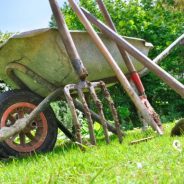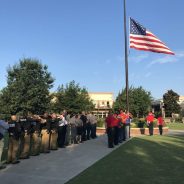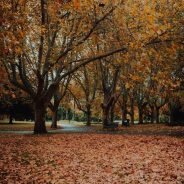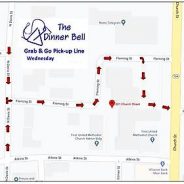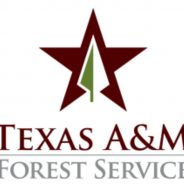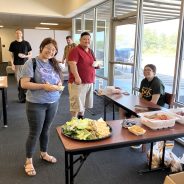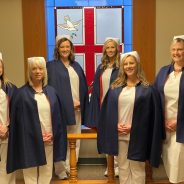Will Our Trees Recover? From Master Gardener David Wall
September 11, 2023 – We’ve discussed soil, water, and sun in terms of their effects on our gardens. It would be shortsighted, however, to ignore the effect of these items on our trees which, under our current conditions, are little effected by the soil itself, as they were born, grew, and currently survive in the same soil. On the other hand, they’re affected by the sun, associated temperatures, and especially by water availability.
Trees have varying abilities to store food-energy (sugars) in the root system but have only a limited ability to conserve energy. Triple digit temperatures combine with severe drought wreaks havoc on the available water supply. Trees do what they can to cope, but coping doesn’t alleviate the need for water.
Leaves can curl to save water, stomates can close, leaves can wilt, turn yellow or brown, and without further relief, drop from the tree. Basically, the trees pretend it’s winter and live off stored sugars. Doing this once may have little long-term effect on mature trees, but when it recurs for several years, trees are left in worsening health each fall, because they haven’t had time to replace sugars lost from previous years’ drought(s). Further, young trees and saplings started with only a few sugars to fall back on. You can also get sudden limb drop where a large limb suddenly snaps in two with no warning.
Urban yard trees need additional water as well as our gardens. Providing 1-2” of Water weekly out to the drip line will provide great relief to soil cracking and root nourishment.
Current conditions which have existed for at least four years show no signs of abating. Rather than being the exception, summer drought in NETSEO appears to be the norm. Further, weakened/stressed trees in a cold winter do not make for a long life.
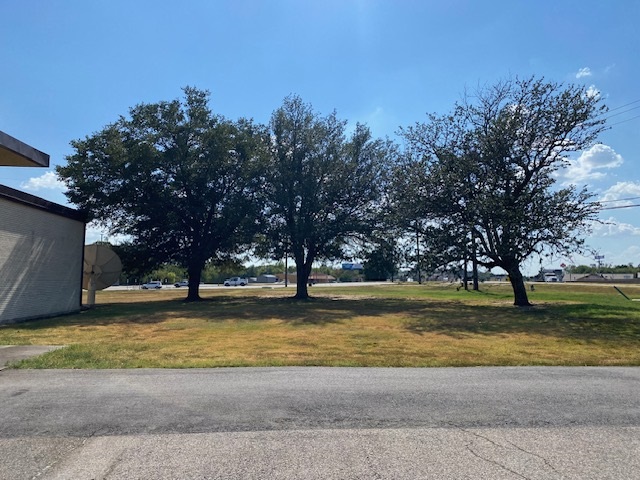
Patriot Day Monday on Celebration Plaza
Monday September 11 the Hopkins County Marine Corps League Detachment 1357 will be lowering the flags on Celebration Plaza. The remembrance starts at 11 AM.
A “short but emotional and important ceremony” will be held as the flags are lowered. The Hopkins County Marine Corps League Detachment 1357’s Judge Advocate will offer a presentation to honor those lost as a result of the tragic attack on our nation 22 years ago.
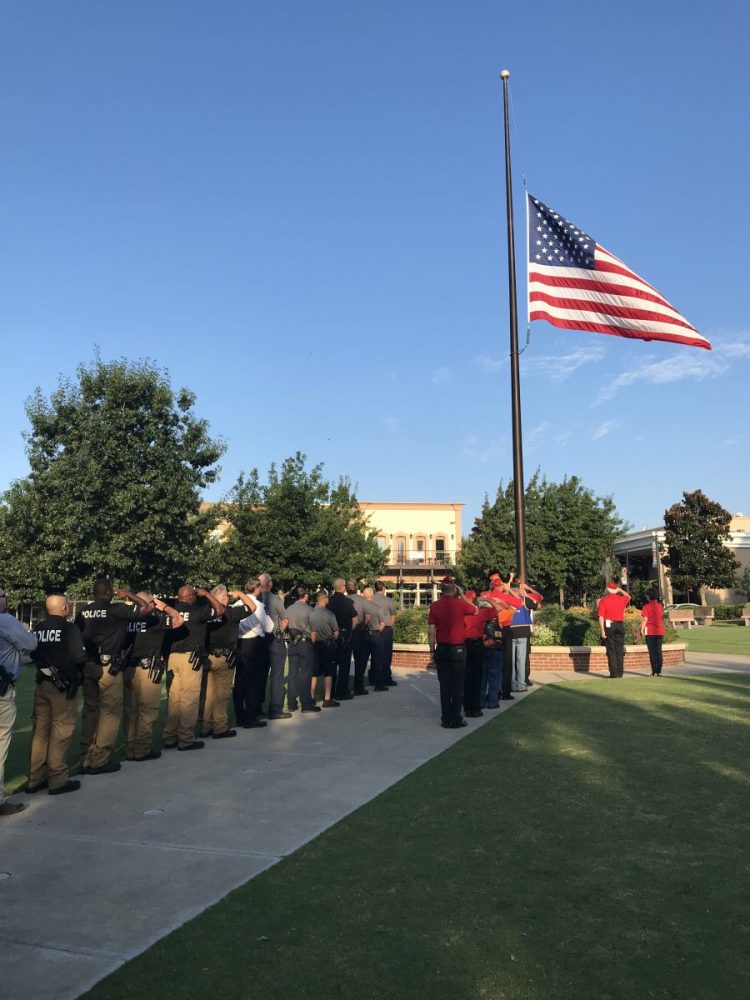
SSHS Athletics Prepare to Induct Three into Wall of Honor
Three former Sulphur Springs High School athletic greats will be inducted into the Wildcat Hall of Honor during a pre-game reception and on-field presentation before the Sept. 15 football game.
All-State offensive lineman Mason Y’Barbo, Division I athlete Fred McGill and tennis state qualifier Betty Sue Chubb Gooch have earned recognition in the Hall of Honor
A reception will be held in their honor beginning at 5:15 p.m. Friday, Sept. 15, in the Hopkins County Civic Center. Family, friends, classmates and fans are invited to attend the reception. The trio will then be announced on the field before the home football game against Van Alstyne.
Mason Y’Barbo, Class of 2010
Mason Y’Barbo was a three-year varsity starter on the Wildcats’ offensive line, including being an All-State player when the Wildcats won the 2008 Class 4A state championship. He was a key member of the line that paved the way for an offense that averaged 43 points per game in 2008 and 406 yards per game.
In his three-year varsity career, the Wildcats won 33 games. He was named Third Team All-State by the Texas Sports Writers Association and Honorable Mention All-State by the coaches association. He was a two-time First Team All-District selection. He also lettered in track and was a four-year member of the powerlifting team and an alternate at the state powerlifting meet as a senior.
He earned a full ride football scholarship to the University of North Texas, where he was a four-year starter on the offensive line and finished his career tied for the second-most consecutive starts in the UNT football program history with 49. He was also a four-year member of the leadership committee for UNT football and a two-year captain, including the 2013 season which ended with a victory over UNLV in the PlainsCapital Bank Heart of Dallas Bowl played in the historic Cotton Bowl Stadium.

Y’Barbo earned All-Conference and national honors as he anchored an offensive line that finished number one in the nation for fewest sacks allowed in 2012, and number one in the country for the 2012 and 2013 seasons combined. His parents, Mitzi and Hank Y’Barbo, live and work in Sulphur Springs. Mason’s family attended First Baptist Church while he was growing up, which he says laid the groundwork for the faith and discipline that would be required to have success on the football field.
He has one brother, Matthew, who is married to Morgan Y’Barbo, and the two are expecting their first child together. Mason began coaching football on the division one level as a graduate assistant at his alma mater immediately following his playing career. He then moved on to the junior college level making stops at Fort Scott Community College in Kansas, and Northeastern Oklahoma A&M College in Oklahoma.
Mason’s last college coaching stop was in the SEC at the University of Missouri in 2019. He then returned to Texas and coached one year at Denton High School, followed by two years at Commerce High School. Mason currently resides in Sulphur Springs and is employed as a Business Development Manager for
Signature Solar.
Mason’s presenter will be his high school head coach, Greg Owens.
Fred McGill, Class of 1987
Fred McGill was an outstanding quarterback and two-time All-District selection for the Wildcats who earned a full football scholarship to the University of Arkansas after his senior season.
At Sulphur Springs High School, McGill was named District MVP in football his senior year and was also selected as the team MVP in football. With McGill at quarterback, the Wildcats went to the playoffs his junior and senior seasons. Though he played quarterback, it was not unusual for him to also be a lead blocker on the “Wildcat Convoy” running plays. During his Wildcat career, Fred was well known for his athleticism, toughness and leadership abilities.

After being recruited by several Division 1 universities, Fred chose the University of Arkansas, where he played running back for the Razorbacks, averaging almost 4 yards per carry his final season. He was a member of the Razorback teams that competed in back-to-back Cotton Bowl Classics in Dallas in 1989 and 1990. He is a current member of the Athletic Club at the university.
Fred has stated that his success wasn’t an individual accomplishment, and he is quick to credit fans and his teammates as being very instrumental in his success. Fred now lives in Aubrey, Texas. After working for FedEx for 19 years, he has been employed with PepsiCo for 11 years, the last eight years with PepsiCo/Fritolay.
His hobbies include playing basketball, working-out, vacationing, and spending time with family, and he is involved with the St. Jude’s Children Hospital charity.
He is widowed from his loving wife, Dana McGill. They have a total of nine children, whom he refers to as the “Brady Bunch”, and 12 grandchildren. Fred’s parents are Louis and Linda McGill of Sulphur Springs and Mary Fort of New York, who have been instrumental supporters in his life.
His presenter for the induction ceremony will be his former coach, Doug Evans.
Betty Sue Chubb Gooch, Class of 1981
Betty Sue Chubb Gooch was a multiple-sport athlete who was best known for her tennis abilities that produced three trips to the regional meet and two appearances in the state tournament.
She earned a state tournament berth as a junior and senior, each time losing to the eventual state champions. As a sophomore, she and Susan Reynolds were the third place doubles team in the region, and her junior year, they placed second in region and advanced to state. As a senior, she was district singles champion and placed second in the region, where she again earned a state tournament berth. She was awarded team MVP in tennis her senior year. Betty Sue was also an outstanding volleyball player, being named First Team All-District Hitter as a sophomore, junior and senior. She was the team MVP in volleyball in 1980, when the team won the district championship.
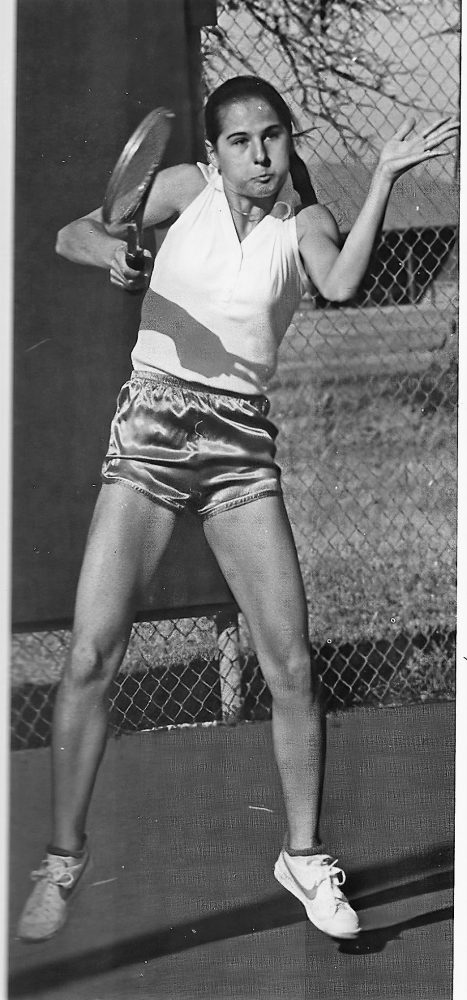
She signed a tennis scholarship with East Texas State University in Commerce, where she qualified for the NAIA Collegiate Nationals in both singles and doubles in 1982. The team finished third at Collegiate Nationals that year. In 1983, she was runner-up in women’s doubles in the Lone Star Conference Tournament. That same year, she qualified for the NAIA Collegiate Nationals in both singles and doubles and advanced to the third round in each bracket. The team finished fourth at Nationals that year. She was awarded the 1983 ETSU Women’s Tennis MVP and was named to the Dean’s List and All Lone Star Conference Academic Team. Betty Sue was also named the Women’s Tennis MVP for 1985 and was
listed in Who’s Who in American College and Universities.
During her time at ETSU, she was elected to the university’s Homecoming Court, was selected for the President’s Disciplinary Board and the Golden Leos and was a member of Chi Omega. She also worked at John Newcombe’s Tennis Ranch as a teaching pro during the summers.
Betty Sue coached varsity tennis for four years from 1985-1988 at Grand Saline and Boswell High School, with 20 of her players going to region and 10 to state. She also coached volleyball and track and taught in high school and middle schools for 30-plus years. After retiring from Birdville ISD in 2016, she joined the
coaching staff at Sulphur Springs High School in 2019 as an assistant tennis coach.
Her parents are the late Sue and Jack Chubb, former principal at Sulphur Springs High School. She has a brother, Jack Chubb, and two sisters, Diana Beverly and Patti Williamson. She has one son, Geoffrey Chance Gooch, daughter-in-law, Kristin, and a granddaughter, Kinlee. Chance is a Texas A&M graduate and is an attorney in Fort Worth.
Betty Sue’s presenter will be her high school coach, Steve Armstrong.
Biographies prepared and written by Butch Burney.
Ideal Time for Planting Cool Season Forages by Mario Villarino
September 9, 2023 – Late September-early October is the ideal time for planting cool season annual forages such as annual ryegrass, small grains (rye, wheat or oats) and/or cool season annual legumes. Anytime we are incorporating new forages into our production systems it is important to make sure to match the forage species to your location (soil type, average annual rainfall, intended use, etc). Three methods for establishing cool-season annual grasses include planting into a prepared seedbed, the light disking method and over-seeding or sod-seeding into undisturbed soil.
Over-seeding warm-season perennial grasses with cool-season legumes offers several benefits: Grazing can begin 4 to 6 weeks earlier grazing in the spring, which reduces the winter feeding period. Legumes typically have higher nutritive value than do most grasses. Legumes fix nitrogen from the atmosphere and make it available to the pasture system. A good stand of legumes can help control spring weeds by competing for space, water, sunlight and nutrients.
There are three methods for establishing cool-season annual grasses include planting into a prepared seedbed, the light disking method and overseeding or sodseeding into undisturbed soil. Planting annual grasses into a prepared seedbed involves destroying the existing vegetation by disking and then rolling (packing) the ground to provide a firm surface for planting and moisture retention. Plant cool-season grasses into prepared seedbeds from mid-September to early October. It is best to plant just before rainfall is expected. For best results, have the soil tested to assess the need for limestone, nitrogen, phosphorus, potassium, or other nutrients. Phosphorus and/or potash fertilizer can be applied before or at time of planting. Nitrogen fertilizer is usually split-applied, and depending on soil test recommendations, may require one to three split applications at 50 to 60 pounds of nitrogen per acre. Delay initial nitrogen application until after the grass emerges.
The light disking method is for use on bermudagrass and bahiagrass stands and involves grazing, harvesting, or mowing the pasture to less than 4 inches tall, then turning the soil 1 to 2 inches deep. This reduces competition from the warm-season grass and provides loose soil to cover seed. For this method plant cool-season annual grasses 4 to 6 weeks before the average first killing frost, which usually occurs in November. Plant seed with a drill or broadcast then use some type of pasture drag to cover seed. Apply phosphorus and potash according to soil test recommendations. These may be applied at or before planting time, or 2 to 3 weeks after the grass emerges. Delay initial application of nitrogen fertilizer until after the cool-season grass is established and cool temperatures have reduced warm-season grass growth. The need for nitrogen fertilization will depend on the soil test and may be split into one to three applications of 50 to 60 pounds of nitrogen per acre.
Overseeding or sodseeding into undisturbed sod requires only that warm-season grass be grazed, harvested or mowed to less than 4 inches high. Broad-casting onto an undisturbed sod is usually limited to annual ryegrass and small seeded clovers such as ball or white clover. Use a sod seeder (no-till drill) or a fertilizer truck if planting small grain. If broadcasting cool-season grasses, increase the seeding rates 25 to 30 percent. The planting date for overseeding/sodding is several weeks later than other methods to reduce competition from warm-season grasses.
Do not apply nitrogen fertilizer until after the cool-season grass is established and lower temperatures have reduced warm-season grass growth. Nitrogen fertilization may be split into one to three applications of 50 to 60 pounds of nitrogen per acre. Apply phosphorus and potash fertilizer according to soil test recommendations. Cool-season annual grasses are best for young growing animals such as stocker calves, replacement heifers, first calf heifers and creep grazing fall calves.
For fall calving cows, limit grazing to 2 hours per day or 4 hours every other day during fall and winter as a protein and energy supplement. As growth rate increases in early spring, increase the number of hours per day on pasture. Can be used for fall or winter calving cows. Should not use for dry, mature cows due to its high production cost.
For more information on this or any other agricultural topic please contact the Hopkins County Extension Office at 903-885-3443 or email me at [email protected].
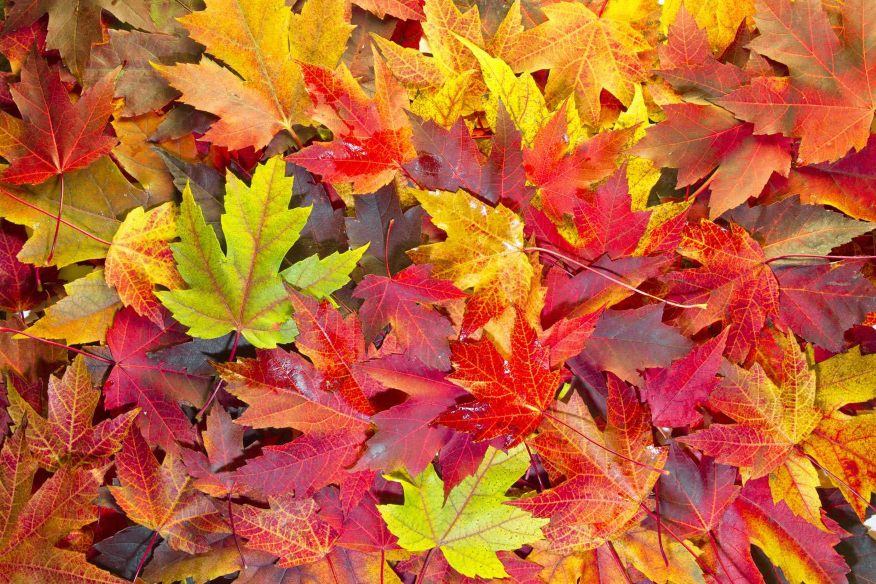
Dinner Bell Menu For September 13, 2023
The Cross Country Cowboy Church is making its 3rd appearance as a Community Partner for Dinner Bell this year. We are deeply appreciative of its dedication to this feeding ministry.
GRAB and GO with a meal from the distribution area under the covered driveway (porte cochere) on the Northeast corner of the First United Methodist Church campus starting around 10:30 on Wednesday.
MENU
Hamburger Steak with Brown Onion Gravy
Rice Pilaf
Bacon Infused Green Beans
Garden Salad
Buttered French Bread Slices
Crumb Cake
BE CAREFUL AS THE PANDEMIC AND FLU ARE STILL IN OUR MIDST! WEAR MASKS WHERE REQUIRED! WASH YOUR HANDS OFTEN! GET INOCULATED AND BOOSTED!
DINNER BELL CARES ABOUT YOUR HEALTH!!!
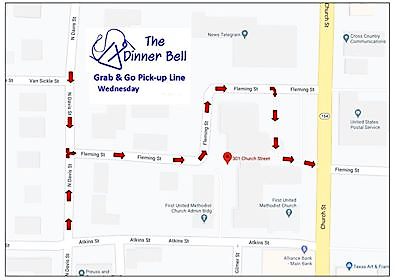
Texas Faces Increased Fire Danger
Unprecedented heat, drought pushing Southern US fire danger to extremes
September 8, 2023 – COLLEGE STATION, Texas The Southern United States has faced a challenging summer with unrelenting daily temperatures of more than 100 degrees, abnormally low relative humidity, critically dry vegetative fuels ready to burn, wildfires exhibiting extreme fire behavior, and to top it off — a hurricane.
Hot summers and wildfires are not new to the South. Nor is interagency cooperation in responding to and suppressing wildfires. But this summer has been far from normal, and in the case of Louisiana wildfires this August — unprecedented.
“For more than 40 days, we’ve experienced temperatures over 100 degrees with low relative humidity, sometimes dipping into the teens,” said Wade Dubea, Louisiana State Forester. “For Louisiana, which typically has a wetter, humid climate, this is record-breaking.”
Lisa Lewis, Forest Supervisor of the USDA Forest Service Kisatchie National Forest grew up in Louisiana and said she has never experienced weather “so hot, so dry, for so long.” With such prolonged weather conditions, she recognizes no one agency can sustain such a wildfire response tempo and is appreciative of the cooperation among the USDA Forest Service, Louisiana Department of Agriculture and Forestry and partners, having provided large air tankers, other aircraft and hundreds of support personnel.
According to the National Incident Management Situation Report (IMSR) — a synopsis of wildland fire and all-hazard activity across the country — the Southern Area remains the number one priority geographic area for wildfires nationally. Underscoring an already noteworthy North American summer fire season, this year is the first time on record that the Southern Area has been the top national priority area for wildfire response during this time of year when historically the West has experienced the most critical fire activity.
In fact, the only other time the Southern Area was the top priority region on the IMSR during the month of August was in 2005 for Hurricane Katrina.
This summer, the areas where many of the wildfires are occurring in Louisiana are the same areas where Hurricanes Delta and Laura left behind an abundance of downed trees and debris in 2020. This has created a tinderbox for fire conditions as the severity of the fire environment is influenced by the amount of available vegetative fuels, and how susceptible those fuels are to burn. This concern extends across the Southeast, where devastating hurricanes have, and continue to leave behind, conditions conducive to wildfire.
“The fire environment is extreme. We only saw similar conditions back in 2000, but this year, we’re having wildfires grow to over 10,000 acres, that run quickly and produce major crown fires in the tops of pines,” said Dubea. “That is totally unusual for us.”
The impacts that these high-intensity wildfires are having on the landscape is also extreme.
“Here in Texas, going out after a fire and seeing the devastation, it literally looks like a nuke was dropped,” said Mandy Chumley, USDA Forest Service National Forests and Grasslands in Texas Public Affairs Specialist. “The level of intensity of the fires and the effects on the landscape are what is unprecedented for me.”
In Texas, 4,279 wildfires have burned 165,837 acres since Jan. 1, 2023. Texas A&M Forest Service personnel responded to 942 of these wildfires for 112,091 acres.
For perspective, on average during the month of August, Texas A&M Forest Service firefighters typically respond to 151 wildfires. This year, agency firefighters responded to 519 wildfires during the month. Likewise, Louisiana experienced an average of 34 wildfires for 295 acres in August during 2019-2022, while in 2023, there have been 555 wildfires for approximately 53,464 acres.
The response to these wildfires has also been monumental. On Aug. 24, Al Davis, Texas A&M Forest Service Director and Chair of the South Central Forest Fire Compact activated an interagency agreement that allows for enhanced personnel and equipment resource movement among states.
“We are supporting the Texas A&M Forest Service and local fire resources to improve conditions in Texas,” said Shardul Raval, Fire and Aviation Management director for the Forest Service’s Southern Region. “The interagency response has been robust.”
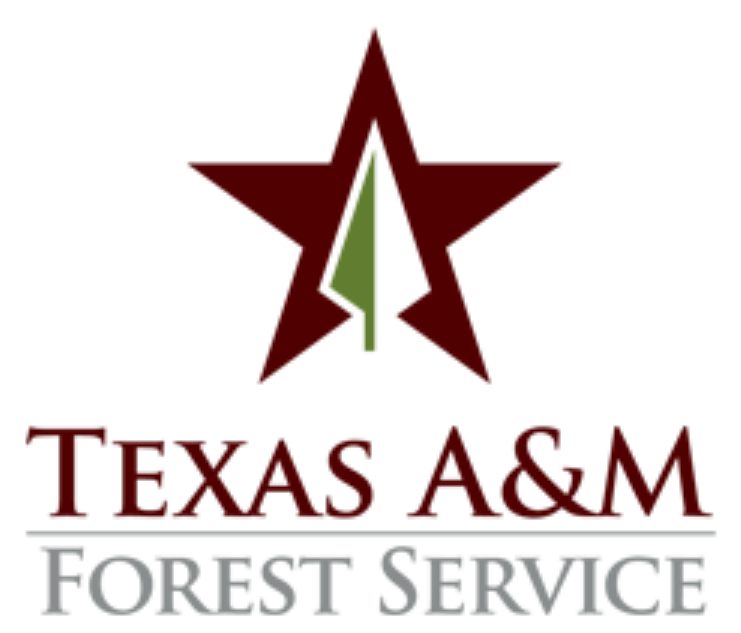
In Texas, there are 322 personnel and 131 pieces of equipment from land management agencies from 36 states, and 52 aircraft staged and assisting in wildfire response. Also responding are more than 690 firefighters from Texas A&M Forest Service and Texas Intrastate Fire Mutual Aid System, to include those sent to assist with Louisiana wildfire response.
“The current drought in Texas and Louisiana is unprecedented. Thankfully, fires on the National Forest and Grasslands in Texas have remained relatively small as a result of our prescribed fire program,” said USDA Forest Service National Forests and Grasslands in Texas Forest Supervisor Kimpton Cooper. “This has allowed the NFGT to support our state and federal partners with ground resources, heavy equipment and aircraft to protect the communities we serve. The collaborative effort between states, communities and federal agencies working together across boundaries is extraordinary. The NFGT is proud to work with outstanding partners and great organizations in these historic times.”
When asked if his state has all the firefighting resources it needs, Dubea said, “We are grateful for the support Louisiana has received from so many corners of this country. The one thing we really need right now is some rain.”
Texas A&M Forest Service Fire Analysts say there is a seasonal weather change forecast to potentially occur in early October. This change could cool temperatures down and possibly produce some much- needed rainfall.
For more information on wildfire activity visit https://www.nifc.gov/nicc/incident-information/national-incident-map.
Student Loan Payments Set to Resume
September 8, 2023 – A three-year pause on student loan payments and interest accrual initiated at the start of the pandemic is coming to an end Oct. 1, leaving nearly 4 million Texans scrambling to figure out how to factor the debt payments back into their budgets.
Former president Donald Trump first suspended payments in March 2020 to provide pandemic relief through the CARES Act, and that suspension was then extended through the end of the year and carried on by President Joe Biden.
But the final extension expired Sept. 1, with student loan interest once again accruing at regular rates after sitting at 0% for three years. Student loan payments will be due in October at varying dates, and borrowers will get a bill at least 21 days before their first payment is due.
Here’s what borrowers need to know as those deadlines approach.
Accruing Interest
How much you pay in interest depends on what type of loan you have and when your loan was issued, according to the U.S. Department of Education.
The interest rate on student loan payments is 5.5% for subsidized and unsubsidized loans first issued after July 1, the highest it’s been since the 2008 recession. In comparison, the interest rate was 4.53% for loans issued to undergraduate borrowers from July 2019 to June 2020.
Making payments
The government offers a variety of plans for repaying your student loans, including income-driven repayment plans if your debt is relatively high compared to your income.
The Saving on a Valuable Education or SAVE plan is the newest option offered to borrowers, previously known as the Revised Pay As You Earn or REPAYE plan. It promises savings on student loan payments for lower-income borrowers compared to other plans, and unpaid interest doesn’t accrue if a borrower makes a full monthly payment.
How to Avoid Problems
Most of the consequences for failing to pay back student loans on time remain the same: Your loan becomes delinquent the first day after a missed due date on a payment.

You can avoid delinquency by getting short-term relief in the form of forbearance, which temporarily suspends your payments. But enough time in delinquency runs the risk of damaging your credit score, and you could eventually default and be forced to pay all your unpaid debt immediately.
A new temporary “on-ramp” for repayment allows borrowers who miss payments from Oct. 1, 2023 to Sept. 30, 2024 to avoid being considered delinquent or placed in default.
The Federal Student Aid Website has more information for student loan borrowers including the new SAVE repayment plan.
Paris Junior College Isn’t All Work and No Play
September 7, 2023 – Students at the PJC-Sulphur Springs Center were treated to a hamburger day at the campus Wednesday. The free burgers brought smiles to their faces.
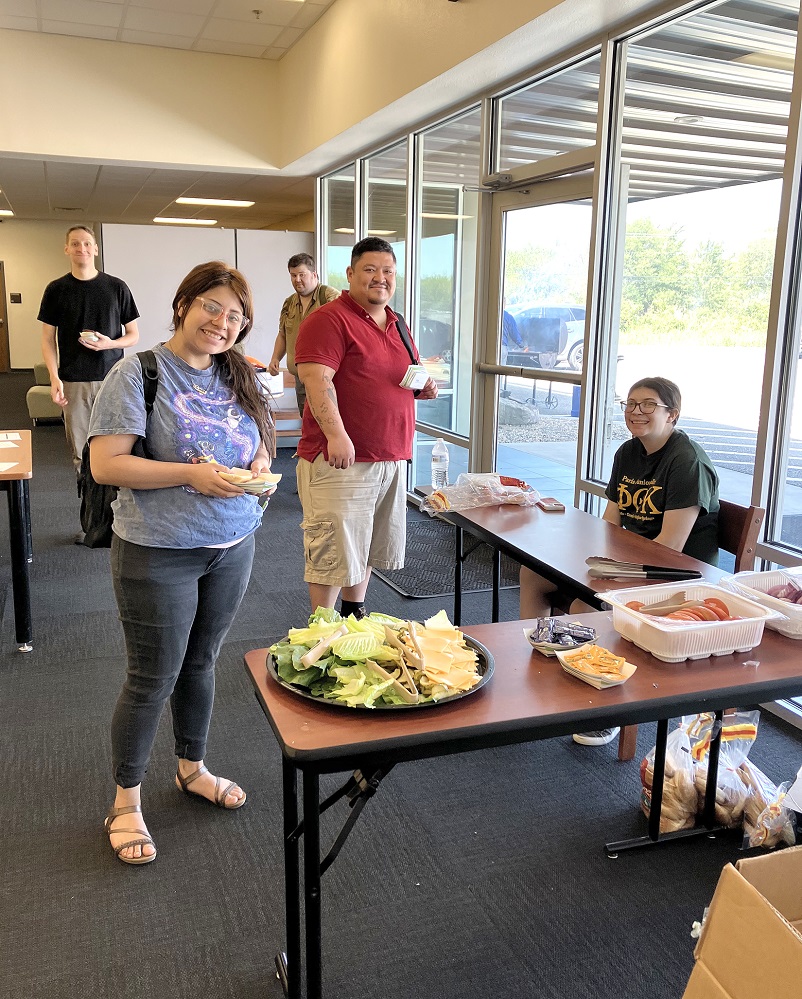
Paris Junior College — located in Paris, Texas, about 100 miles northeast of Dallas — has been a part of the Lamar County community since 1924.
Paris Junior College offers Associate in Arts, Associate in Science and Associate in Applied Science degrees, as well as Certificates of Proficiency in technical/workforce fields. The college has expanded its academic curriculum through the years to encourage associate degree and university transfer candidates. Since establishing its first vocational program — jewelry and watchmaking in 1942 — the college has been aggressive in adding technical/workforce programs that will benefit students entering the workforce.
The campus of 54 tree-shaded acres includes 20 major buildings and residence halls and provides students a unique and pleasant environment for learning.
Paris Junior College also operates centers in Sulphur Springs, Texas, and in Greenville, Texas.
Vision
To be the educational provider of choice for the region.
Mission
Paris Junior College is a comprehensive community college serving the region’s educational and training needs while strengthening the economic, social and cultural life of our diverse community.
Making a Historic Investment to Provide Statewide Connectivity
September 7, 2023 – Texas has a lot to offer which includes over 80,000 highway lane miles. We also have worldclass rail and air facilities for freight and passengers. Nearly 2,000 people move here every day. That’s one of the reasons why the Texas Transportation Commission made history this month by approving a record $142 billion total investment for Texas’ transportation infrastructure, including the $100 billion 10-year Unified Transportation Program (UTP).
TxDOT works to provide the needed infrastructure to help move people and products across the state. The historic 2024 UTP reflects an unprecedented level of projected funding and estimates $34.2 billion in development costs and $7.5 billion in routine maintenance contracts.
This 10-year plan provides for the development of a network of rural highways to improve mobility, connect major activity centers, provide access to ports of entry into Texas, and address safety by building four-lane divided roads.
Since our mission at TxDOT is “Connecting You With Texas,” we’re working hard to make sure every region of the state stays connected. Since fiscal year 2015, we’ve completed more than 258 rural connectivity projects. We have another 120 projects — $7 billion worth — under construction.
We’re planning to invest a historic level of $19.2 billion in our rural areas over the next 10 years through the 2024 UTP. It demonstrates TxDOT’s commitment to building and maintaining a safe and efficient transportation system, not only in our most populous areas, but also in those rural areas that are so vital to our state’s economic success.
Alvin New, Commissioner, Texas Transportation Commission

New Nurse Honor Guard Commemorates Deceased Fellow Nurses in East Texas
September 7, 2023 – (East Texas) – At a recent memorial service, a group of nurses dressed in a traditional nurse’s uniform – white scrubs, white shoes, white cap, and blue cape – approached the casket.
A burning candle led them down the aisle where they delivered a card to the family, extinguished the candle, read a tribute and placed a rose on the casket. The ringing of a triangle followed the saying of the deceased name three times.
They are nurses from the CHRISTUS Northeast Texas Nurse Honor Guard, paying their respects to their fellow nurse in a short but powerful tribute.
“We liken the service to that of a military tribute, where we officially release the nurse from their nursing duties,” said Anitha Sanderson, chief nursing officer at CHRISTUS Mother Frances Hospital – Sulphur Springs.
Sanderson is one of the founding members of the new Northeast Texas Nurse Honor Guard, created in February. Their mission: To honor nursing colleagues who have died and to provide comfort to their families by reading the Nightingale tribute at their services.
The Nightingale tribute is named for Florence Nightingale, widely regarded as the founder of modern nursing, and includes the reading of a poem titled, ‘She Was There.’
“I got the idea from a sister hospital CHRISTUS St. Elizabeth in Beaumont and I immediately knew that I wanted to be a part and extend the opportunity here in Northeast Texas,” Sanderson said.
The Nurse Honor Guard is not limited to CHRISTUS Associates. Any active or retired registered nurse (RN) or licensed vocational nurse (LVN) in the state of Texas is eligible to join.
Currently, there are 168 members in the Northeast Texas Nurse Honor Guard, with more than 30 nurses committed to participate in memorial services in the following counties: Hopkins, Delta, Wood, Rains, Franklin, Lamar, Cass, Fannin, Camp, Titus and Upshur.
The Nurse Honor Guard can be requested by the funeral home and/or families.
“Nursing is a calling, and we want to do what we can to recognize those who answered the call,” Sanderson said. “It means the world to us to be able to express to the families that, by being a nurse, their loved one made a difference.”
For those interested in the Northeast Texas Nurse Honor Guard, call 903.439.4049 or email [email protected]
###
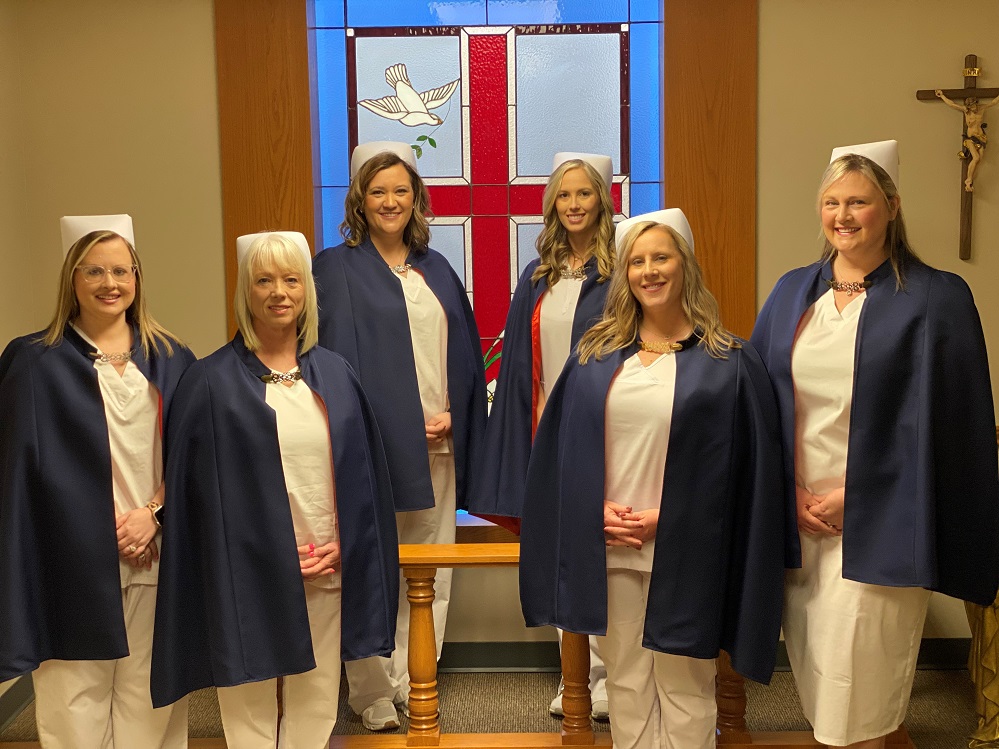
Sarah Mills, Anitha Sanderson, Alyssa Flatt, Tanna Holland, Cassidy Cameron, and Kari Froneberger



